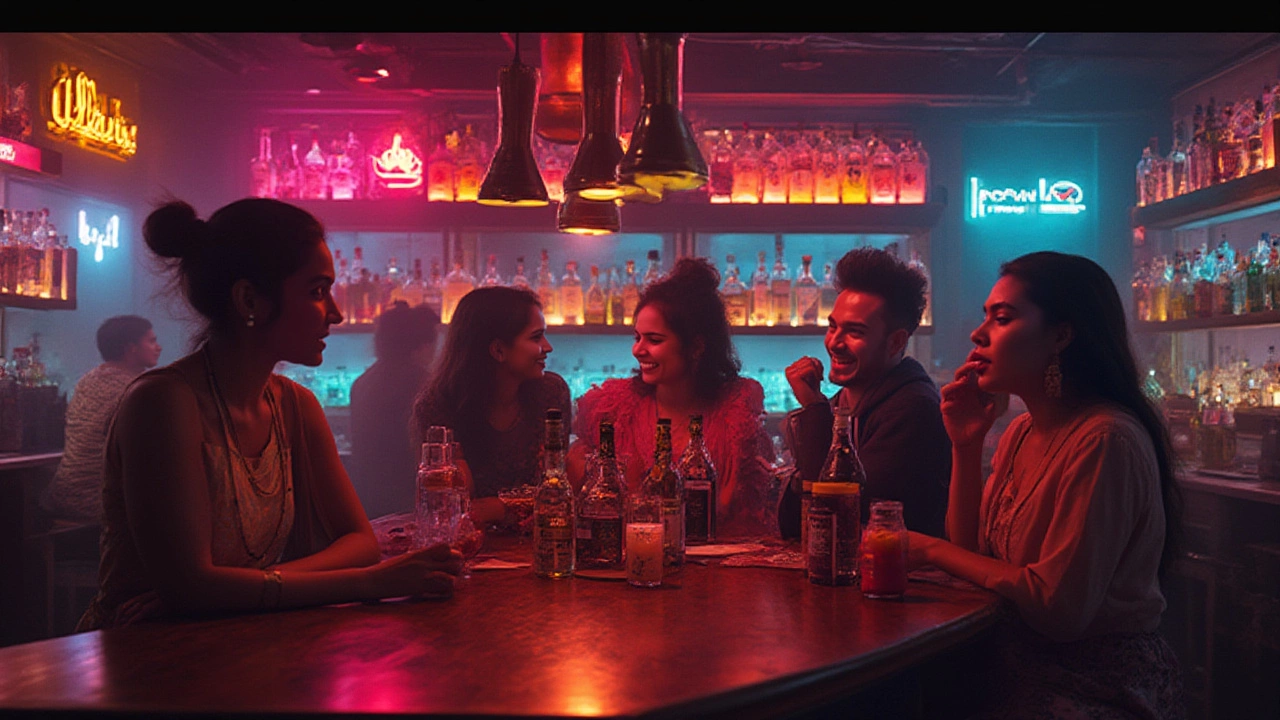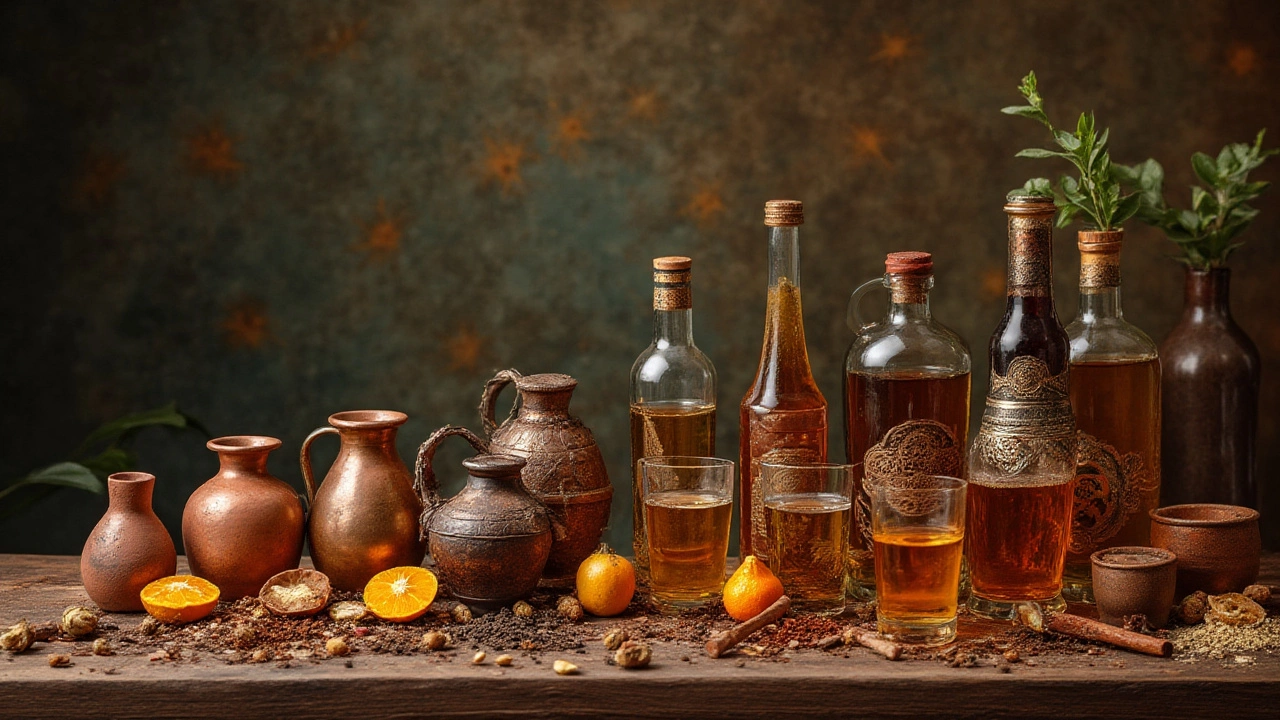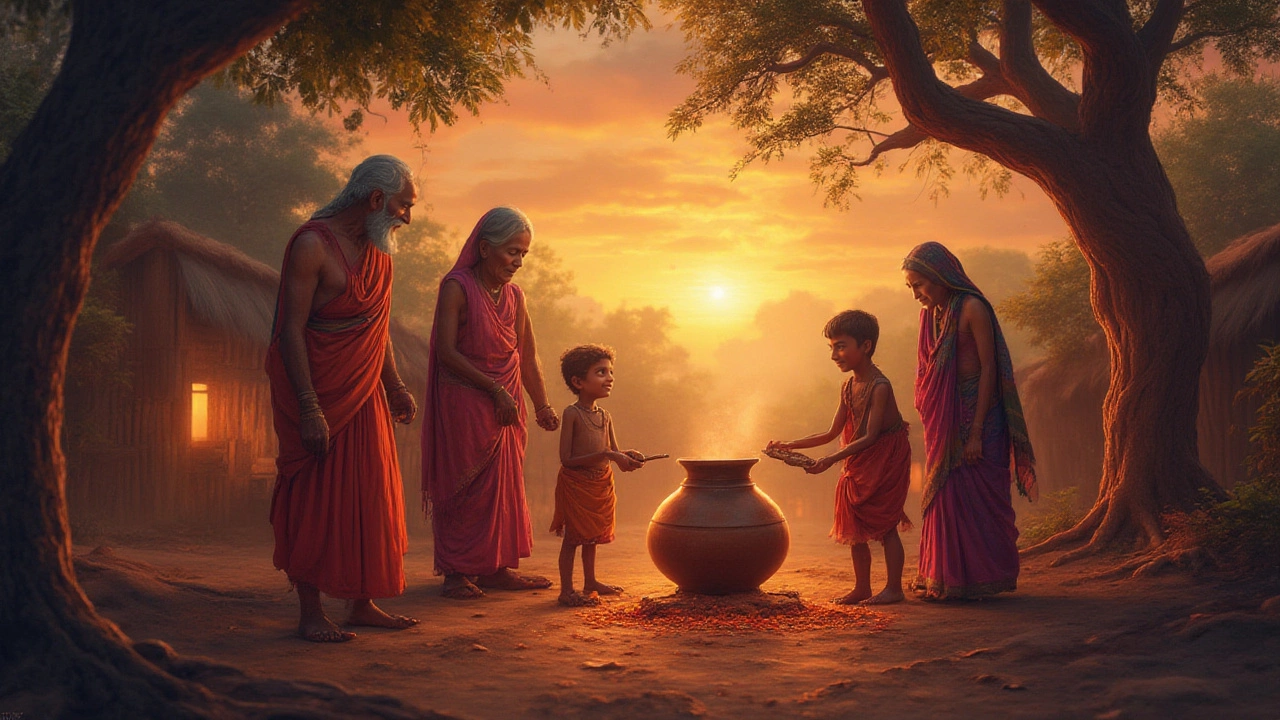Ask someone to picture Indian drinks, and most will jump right to chai or perhaps a bright mango lassi. Alcohol doesn’t usually make the top of the list, at least in global conversations. Yet, if you peek inside homes or humbling rural breweries, booze runs as deep as any festival. India’s relationship with alcohol is long and tangled, sometimes celebrated, sometimes hushed. Curious why a country famous for spices, sweets, and vegetarian feasts hides a wild, inventive world of spirits? Let’s pull the curtain back and uncover what the alcoholic drink is in India—and why it’s so much more than whiskey soda at a city bar.
Traditional Indian Alcohol: From Ancient Ferments to Village Favourites
It’s tempting to think every Indian city drinks whiskey or beer like the rest of the world, but the truth is way juicier—and way older. Indian alcohol didn’t land here with the British, though the British did leave behind a taste for gin and malts. Go back way further: ancient texts like the Rigveda (dating about 1500 BCE!) talk about Soma—a sacred, probably fermented brew said to offer immortality. Historians still argue about what it tasted like, though it probably packed a subtler punch than the flavored vodka shots at today’s parties.
The real backbone of Indian booze, though, is in what’s called “desi daru”—literally, country liquor. These are homemade, sometimes backyard-brewed drinks. The recipes? Passed down through families, whispered about at neighborhood weddings. Ever heard of Mahua? It’s a heady, floral drink made from mahua tree flowers—common in the Madhya Pradesh tribal belt. Feni is another favorite, especially on Goa’s sunburnt beaches. Made from cashew apples or coconut sap, it has a sharp, fruity kick and is still made in copper pots by hand. And if you’re up in the Himalayas during a chilly night, you’ll find yourself warming with a clay mug of chhaang (from barley) or apong (a rice beer from Assam). According to a 2023 survey by the Indian Council for Medical Research, over 25% of rural alcohol drinkers opt for these local brews—calling them smoother, less harsh, and somehow, more “homely.”
Let’s not forget Toddy—for many, the OG of all Indian drinks. It’s a lightly alcoholic drink made from the fermented sap of palm trees, especially popular along the southern coasts in Kerala and Tamil Nadu. If you’re nervous about the hygiene or the whiff of adventure, ask around; locals have tips for the best stilt-side bars with clean gear. Even major cities like Mumbai and Chennai host hidden toddy shops for those “in the know.”
Some drinks are only sipped during festivals. Arak, an anise-flavored spirit, makes appearances during Holi or in Parsi homes. Local legalities vary—some of these drinks are fiercely protected as part of state heritage, others are banned outright or linger in a legal gray zone. Alcohol laws change state by state, with “prohibition” sometimes declared (for instance, in Gujarat or Bihar). But locals rarely stop at laws; they find workarounds or quietly brew at home, keeping traditions alive. Authentic? Absolutely. Legal? Sometimes it’s a coin toss.
Here’s a tip for travelers: If you’re aiming to try desi daru, always go with someone who knows the real, trusted suppliers—rogue spirits can be unsafe due to dangerous distilling or adulteration. When in doubt, stick to branded versions. And yes, bottled “country liquor” exists at government shops in certain states, so you can get a safer version of the rural staple.

Popular Commercial Alcoholic Drinks: India’s Modern Spirit Revolution
Alright, let’s talk about what’s on shelves from Delhi to Bengaluru. If you ask an urban Indian, “What’s the alcoholic drink in India?”, odds are you’ll get three quick answers: whiskey, rum, and beer. Turns out, India has the world’s largest whiskey-drinking population—and it isn’t even close. The numbers are wild: India drank over 250 million cases of whiskey in 2022, with eight of the world’s top ten best-selling brands hailing from Indian soil. Names like Royal Stag, Blender’s Pride, and McDowell’s are household staples. Some brands feel upscale, others belong at boisterous home parties with masala peanuts and Bollywood songs blaring from speakers.
Beer’s no slouch, either. Kingfisher dominates bars and weddings; its bright branding and easy chug-ability make it India’s “national beer” in people’s hearts (even if that’s not official). In summer, cities like Pune or Bangalore see microbreweries cropping up on every busy street. If you like experimenting, try Bira—India’s answer to craft brews, with lighter wheat options and even unusual twists, such as spicy mango or coconut ales. Despite the massive whiskey culture, beer rules when temperatures soar or sports matches are on.
Rum is another old friend. Old Monk, the chunky-bottle, vanilla-smelling staple, is almost legendary. Ask any college grad from the ‘90s what got them through hostel nights, and you’ll hear glorious tales of Old Monk and cola. It’s still affordable, making it the go-to for budget parties and nostalgia-fueled reunions. And if you love a mojito, Bacardi India offers a sweeter, lighter blend. Brandy is huge in the chilly south, oddly enough. Rich in flavor, it’s sold in pint bottles at government shops—Keralites often use it as a “remedy” for bad colds, but you’ll also find it at weddings and family get-togethers.
A glance at trendy bars, though, tells a different story. The cocktail scene has exploded since 2018. Bartenders in metros now mix Indian gin (like Greater Than, Hapusa) with tonic and cardamom, serve smoky whisky cocktails inspired by Rajasthan, or showcase vodka infusions with local fruits. Mixology competitions shine a spotlight on Indian-made spirits, making them sought after among young crowds who want something fresh but still rooted in local identity.
And here’s something fun: India’s love of strong spirits means most big-name “IMFL” (Indian Made Foreign Liquor) is actually much higher in alcohol content compared to western equivalents. A standard bottle of Indian whiskey often clocks in at 42.8% ABV (alcohol by volume)—compared to 40% in Europe or the US. That’s a small difference, but it means Indian parties often get rowdier, faster. For lightweights, beer or watered-down drinks are the safer route.
Here’s a quick look at India’s most popular alcoholic beverages in 2024:
| Type | Most Popular Brands/Variants | Average ABV | Where to Find |
|---|---|---|---|
| Whiskey | Royal Stag, Blender’s Pride, McDowell’s No. 1 | 42.8% | All over India, liquor stores, bars |
| Beer | Kingfisher, Bira, Budweiser | 4.5% - 8% | Bottleshops, pubs, restaurants |
| Rum | Old Monk, Bacardi, Captain Morgan | 37-42.8% | Shops, bars, home gatherings |
| Brandy | Mansion House, Honey Bee | 36-42.8% | South India, cold states |
| Country Liquor | Mahua, Feni, Toddy | 10-45% | Rural areas, some city specialty bars |
Prices? It’s a spectrum. In Mumbai or Delhi, a premium bottle (say, single malt whiskey) can cost ₹3,000 and up. Local country liquors are far cheaper—sometimes a few hundred rupees a bottle. State taxes and regulations mean the same brand might vary wildly across two neighboring towns. And don’t even get started on “dry days”—all booze shops shut for major religious holidays, elections, or even surprise government announcements. Stock up ahead unless you want to go thirsty just as your party starts.
It’s worth knowing the etiquette. While alcohol is legal (with adult age usually 18–25, depending on state), public drunkenness is frowned on, and local customs matter. In Punjab, whiskey at a wedding is routine, but in Rajasthan, home-brewed liquors can be honor-bound family recipes. Always ask before offering or bringing a bottle; what’s fine at a city flat can raise eyebrows in some small towns or religious families.

Booze and Indian Culture: Ritual, Taboo, and Social Shifts
Alcohol might seem like just another party prop, but in India, it’s loaded with meaning. Sometimes sacred, sometimes scandalous. For centuries, certain tribal and rural communities have used alcohol—like rice beer and palm wine—for rituals, births, and funerals. Special drinks are brewed just for gods during big festivals, then shared by worshippers. For many tribes, refusing a ceremonial drink is actually rude.
The urban middle class, though, used to frown on drinking, especially for women. Fast-forward to post-2000s India, and it’s a different world. Young professionals sip gin cocktails at rooftop bars, brunch with bloody marys, or order creative whiskey sours flavored with local mango or kokum. Indian women now account for a growing chunk of spirit sales. A 2022 World Health Organization report found that 32% of new bar-goers in Indian metros are women aged 25-40—a dramatic shift from just a decade ago.
Yet, not everything is rosy. Alcohol alcoholism and illicit brew tragedies make headlines, especially where strict bans drive people to dangerous black markets. In 2024, Bihar saw a spike in “hooch” tragedies after a total ban on sales. According to the National Crime Records Bureau, alcohol-related fatalities doubled in some states with bans. That’s why debates about legalizing and regulating all alcohol, including traditional and “country” varieties, keep raging in parliament and on news channels. Proponents say legal booze is safer; opponents link drinking with domestic violence and accidents.
Strangely enough, alcohol is also tied up with identity. In Goa, happy hour is a cultural fixture; elsewhere, teetotaling is almost political. Older generations may still see public drinking, especially by women, as shameful or rebellious. That’s changed a lot. Tier-2 cities now boast speakeasies and wine-tasting festivals, often with “indigenous” twists—think jackfruit cider or rum infused with local spices. Bollywood and web series don’t shy away from showing women or men drinking openly, subtly changing what’s seen as “normal.”
If you’re new to India’s drinking scene, here are some handy tips:
- Always check the minimum drinking age. It’s 18 in Goa, but 25 in Delhi or Mumbai.
- Don’t take photographs in rural “toddy” or desi daru shops without asking—some locals are shy about documentation.
- Don’t overdo it! Most Indian spirits are stronger than their global counterparts.
- Mix it up with local snacks—spicy fried peanuts, masala papad, or even chakhna (a mixed snack plate) are perfect with high-proof drinks.
- Never drink and drive—the police are strict, especially on festival nights.
Why does this matter? Few travelers or even city-dwellers understand how deep booze runs in Indian culture—from social rituals, rebellious acts, and gourmet trends, to tragic tragedies and bold new beginnings. For every whisky-sipping uncle at a family get-together, there’s a grandmother somewhere quietly sipping mahua or pouring toddy for a goddess. For young Indians, sharing a craft cocktail at a new-age bar is as much about fun as about marking personal freedom. The world of Indian alcohol, like the nation itself, is layered, vibrant, quirky—and never, ever boring.
